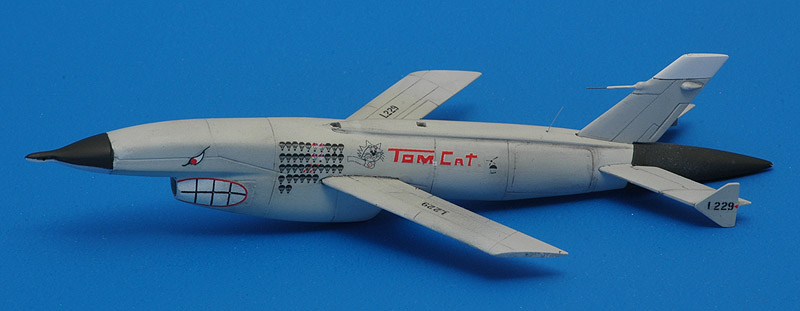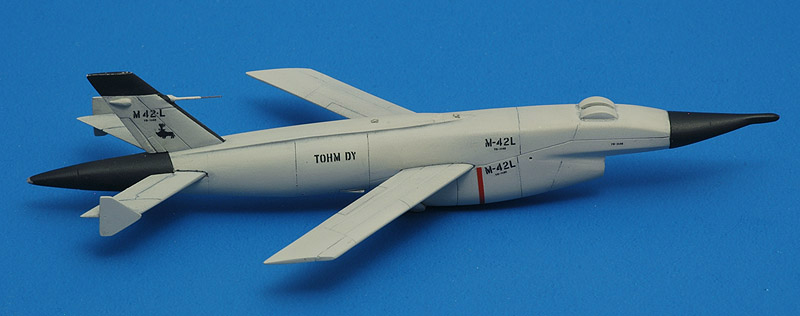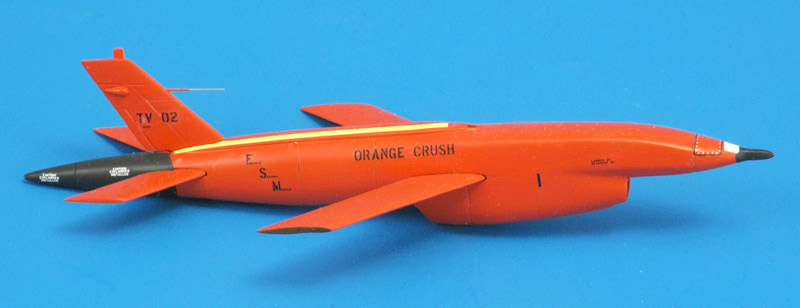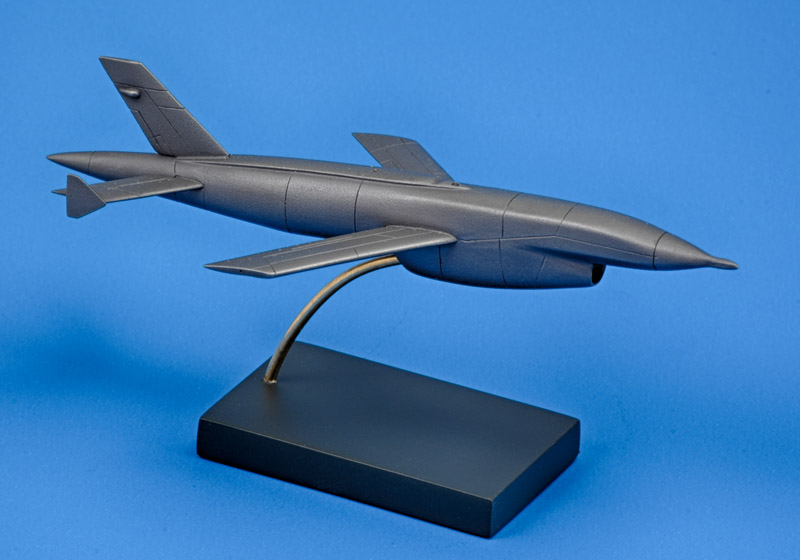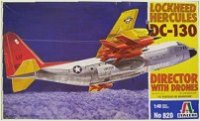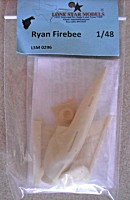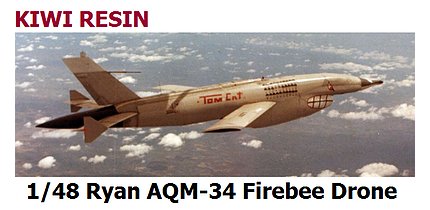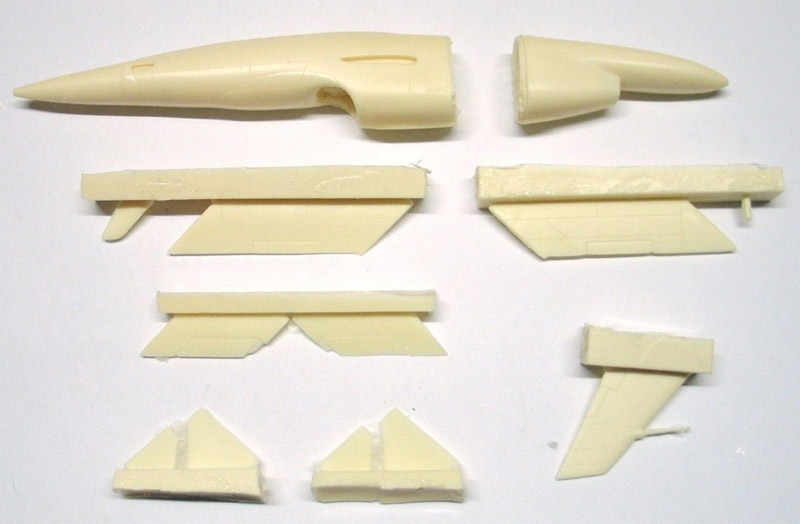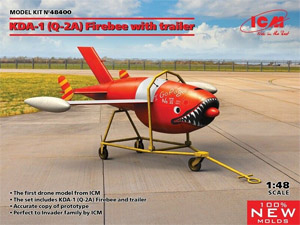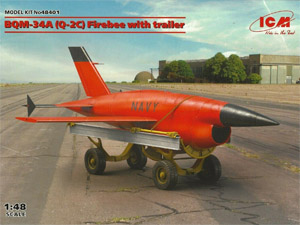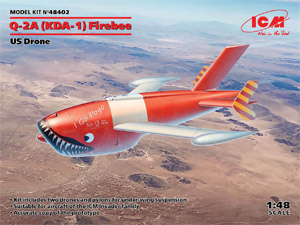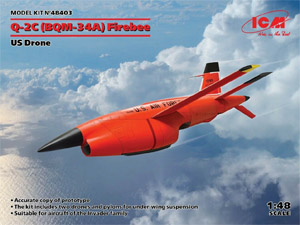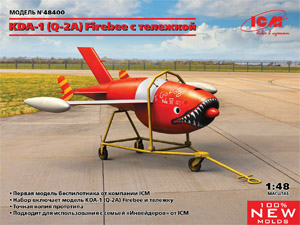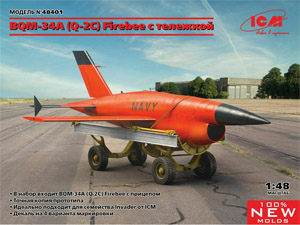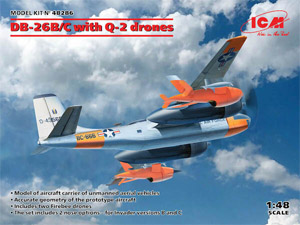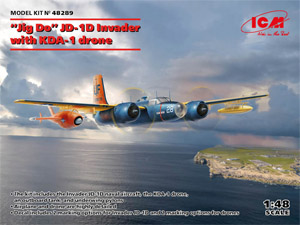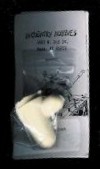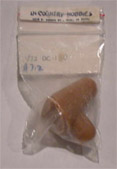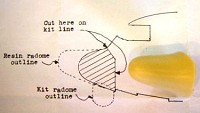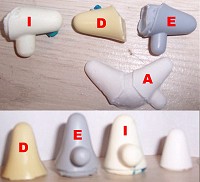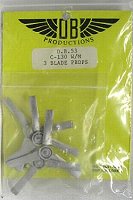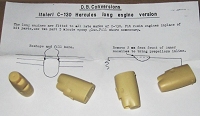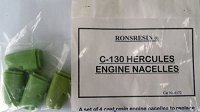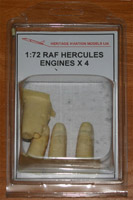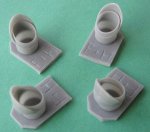Italeri 'DC-130 Director' (kit no 148) was issued in 1986, and was probably deleted from the catalog a few years later (my 1991 catalog no longer lists it). The kit contains a sprue with four identical BQM-34A Firebee I models, plus DC-130 pylons, thimble radome and rear fuselage doors with windows. The Firebee dimensions agree closely with published data and the BQM-34A drawing in 'Lightning Bugs'. The only shape problem identified so far is that the sheet metal around the exhaust is shaped incorrectly (correction shown here), and possibly the vertical fin is offset to the left side a bit. The models have raised panel lines, including lines for a turbine warning stripe. A built-up Firebee is shown on this page by Al Magnus. On the Britmodeller forum, 'Wolfpack' shows his finished DC-130A with four Firebees. Mark Strasser shows his finished Navy DC-130A with four Firebees on the Hyperscale forum. Comments on the Hercules model can be found at the end of this page.
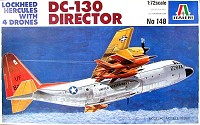
| 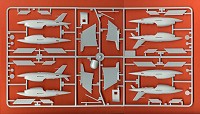
| 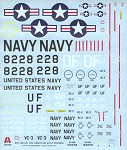
|
the Testors version of the same kit from 1986, with catalog number 690. The box appears to have two 'box art' sides. Decals are by Scale-Master.
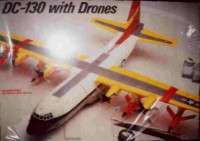
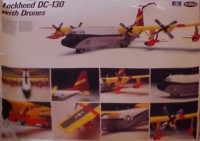
Airmodel AM-057, issued in 1984 or 1985, with four identical vacformed AQM-34H's with ALE-2 chaff pods and DC-130 pylons. The Airmodel website has a page with details on this kit.
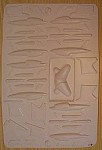
|
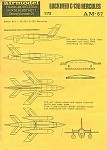
|
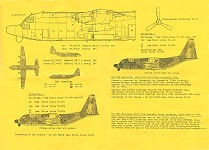
|
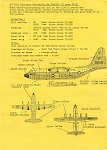
|
These models have a large number of problems. They claim to represent the AQM-34H (Model 147NC), but they lack the 35" rear fuselage plug that every Model 147 / AQM-34 has except the 147N, NQ and NX models. The nose shape is mediocre attempt at the unique nose shape of the AQM-34H and J, as seen in this Larry Engesath photo. This combination makes that only the relatively unknown 147NQ (ten built, only one known photo) can be built 'straight from the box'. Other problems of the model are that both the wings and horizontal tail planes are too short in span. The wing sweep is 40 degrees, while 45 degrees is the correct value. The models have engraved panel lines that are quite wide. The photos below compare the correctly dimensioned Italeri components with those of the Airmodel kit (sanding work courtesy of Tjepke Heeringa). On the positive side, the pylons are correct for AQM-34 launching DC-130's. The pylons of Italeri's DC-130 are very thin and lack a rearward extension (see pylon discussion on the DC-130 page). Together with the 'Pinocchio' radome, the set allows the conversion of any C-130 model to a DC-130.

|

|

|
Alex Hunger used the Airmodel set as a basis to build four Firebees. Hannants was selling them for a ridiculously low price about 10 years ago, clearing old inventory, and Alex had a spare Airfix C-130E that needed a little fixing up. All Firebee wings and tail surfaces were made from plastic card, since the vacform parts were completely unusable. The idea was that if the kit drones were nearly unusable the way they were, he would at least have four radically different ones with only a little more effort. All the drones received etched brass brackets to help mount them on the Hercules carrier aircraft.
Starting at the top is a standard BQM-34A target Firebee in orange with decals from the Italeri kit, found in the IPMS-UK decal bank. All other drones received scratch built extended center fuselage sections and surgery on their noses. First of these is a black AQM-34Q, inspired by the Pima Air Museum example (the model's wings are not correct for that version however). The most involved conversion resulted in a 32 foot wing AQM-34N (Model 147H), using the camouflage pattern as shown on page 113 of Lighting Bugs. The last model shows an armed BGM-34C with two Mavericks from a Hasegawa weapons set.

|

|
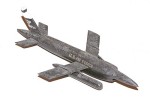
|

|
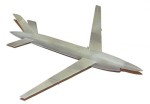
|
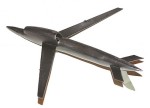
|
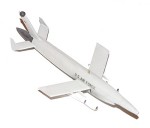
|

|
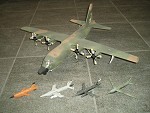
| |
CzechMaster resin AQM-34, one-piece casting with two ALE-2 chaff pods. Long out of production, and no mention of it can be found on the internet. No catalog number known, probably never assigned. Andy Hill found one on Ebay. He compared it to the photos of the Airmodel vacform shown above, and found it nearly identical. In that case it is very likely that this model actually served as the master for the Airmodel vacform. The 'Encyclopaedia of Military Models 1/72', page 63, reports that some forty Czech resin kits served as masters for Airmodel vacs. Andy describes the resin model as kind of clunky overall, crudely cast, with panel lines that border on panel trenches, and they don't meet correctly. The wing sweep is 40 degrees like the Airmodel vac. The photos below show the model, the left photo was kindly supplied by Drew Hill.
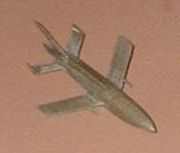
|

|
Late 2005 Belcher Bits issued a resin set with two Ryan KDA-4 Firebee drones and mounting pylons, for the two Canadian Lancaster 10DC's as operated by CEPE ca. 1959-60. Catalog number is BL06, and decals for the Lancaster are available from decal set BD18. NIMBVS from Italy built a very nice model from this kit (translation), with rescribing and custom decals
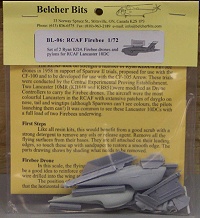
|

|

|
In January 2007 Lone Star Models released a 1/72 JD-1 (A-26) drone controller conversion set for the Airfix kit. The set includes one Q-2/KDA drone (the older and smaller Firebee drone), a radar dish to go in the modified nose, a ballast tank, and metal sway braces for each. Catalog number is LSM0321, renumbered to LSM70321 early 2011. In July 2011, decals were added to the set.
The Q-2/KDA drone from the above Lone Star Models set is also be available separately as catalog number LSM0322, renumbered to LSM70322 early 2011. In July 2011, decals were added.

|
Q-2A and KDA models in 1/72 scale were in preparation by Ace Resin & Hobbies (via Wayback machine), mastered from a 3D printed model. However, the web site went offline around 2013
The old SharKit missile kit database (that is no longer online but can be viewed via the Wayback Machine) lists some of the above Firebee models. The CzechMaster kits are listed as 'Private Venture B'.
The supersonic BQM-34E/F/T Firebee II, a totally different beast, is available as a model in 1/72 scale from Airmodel (AM-063, vacform set with two Firebees, DC-130 and DP-2 parts including pylons, the Airmodel website has a page with details), 12 Squared (kit no 2-34, injection molded, comes with dolly), CzechMaster (resin, probably served as the master for the Airmodel vacform kit) and Panzer Models from the USA (72004, resin, 1991, with launcher).
In 2019, Black Dog issued a 1/72 AQM-34 Firebeb (sic), catalog number A72058. The box says it's a 'AQM-34 Firebeb' (sigh) but it's a BQM-34A Firebee, the classic second-generation Ryan target drone, as built from 1960 to 1982. The BQM-34A has nine parts, the cart has seven parts. No instructions or background story are included, and more importantly no decals either.

|

|

|
The model itself has numerous problems:
overall length should be 275.71" = 97.3 mm. I measured 80.9 + 10.5 = 91.4 mm, 5.9 mm too short, or 94% of the real length
the fuselage is too fat in the middle, giving it a pregnant look. It's also too fat behind the wing. Ryan drawings show 28.12" max width, 9.9 mm in 1/72, the model is 12.3 mm
the nacelle is too short
the wings and tailplanes have 'root ribs' embossed on the fuselage, to which the flying surfaces are to be butt-jointed. This makes for weak connections, difficult sanding, and missing gaps. The Italeri method with recessed pockets is so much better and realistic
the wings and tailplanes all have a completely unrealistic wedge-shaped wing profile, flat on the top and bottom sides. The unique drooped-leading edge profile of the main wing is absent
the tailplanes attach to the main parachute cone, that is ejected during recovery, instead of the rear fuselage
the tailplane endplates are of a type that I have never seen
the panel line that separates the radome from the fuselage is placed too far forward, making the radome far too small
most panel lines on the rear fuselage are missing
the electronics hatch on the rear left fuselage is positioned too far forward
the spine starts too far aft
the inlet shape looks strange
there's a concave area behind the exhaust that does not exist
the cart is of a type that I've never seen
On the positive side, I found just two air bubbles in the parts (both in the wing tips). But all in all it's an mind-boggling list of errors, like they did not even try to make an accurate model. Very strange for a 21st century issue when so much information is available.
In 2020, Plusmodel released three Firebee kits. I wrote a kit review about the BQM-34 on my scale models website. My conclusion was that it's a reasonably good model, but it has several errors. I don't think it's an improvement over the old Italeri model.
AL7028: BQM-34 Firebee, with USAF and USN markings and pylon(s)
AL7035: BQM-34A Firebee with cart
AL7036: KDA-1 Firebee, with USN markings and pylons
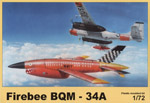
|
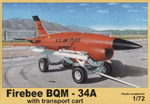
|
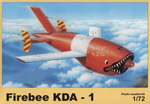
|
| 7028 | 7035 | 7036 |
